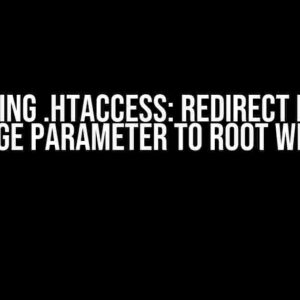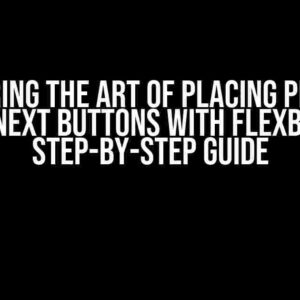Welcome to this in-depth guide on blogging site development! Are you tired of using third-party platforms to host your blog, and want to take your online presence to the next level? Look no further! In this article, we’ll walk you through the entire process of building a custom blogging site from scratch, using cutting-edge technologies and best practices.
Why Build a Custom Blogging Site?
Before we dive into the nitty-gritty of blogging site development, let’s discuss the benefits of having a custom-built blog:
- Total Control**: With a custom-built blog, you have complete control over the design, functionality, and content.
- Unique Branding**: Stand out from the crowd with a bespoke design that reflects your personality and brand.
- SEO Optimization**: A custom-built blog allows you to optimize your site for search engines, improving your online visibility.
- Monetization Opportunities**: With a custom blog, you can integrate advertising, affiliate marketing, and sponsored content seamlessly.
Choosing the Right Technology Stack
When it comes to building a custom blogging site, the technology stack you choose is crucial. Here are some popular options:
Front-end Frameworks
// Options:
- React
- Angular
- Vue.js
- Ember.js
For this guide, we’ll focus on using React, a popular and versatile front-end framework.
Back-end Frameworks
// Options:
- Node.js (with Express)
- Ruby on Rails
- Django (Python)
- Laravel (PHP)
We’ll be using Node.js with Express as our back-end framework, due to its simplicity, scalability, and ease of use.
Database Management Systems
// Options:
- MySQL
- PostgreSQL
- MongoDB
- Firebase Realtime Database
For this project, we’ll use MongoDB, a popular NoSQL database that’s well-suited for blogging sites.
Setting Up the Development Environment
Before we start building our blogging site, let’s set up our development environment:
- Install Node.js and npm**: Download and install Node.js from the official website. This will also install npm, the package manager for Node.js.
- Install MongoDB**: Download and install MongoDB Community Server from the official website.
- Create a new project folder**: Create a new folder for your project, and navigate into it using your terminal or command prompt.
- Initialize the project with npm**: Run the command
npm initto create a newpackage.jsonfile.
Building the Front-end
Now that our development environment is set up, let’s start building the front-end of our blogging site using React:
// Install React and related dependencies:
npm install react react-dom
// Create a new React component:
import React from 'react';
import ReactDOM from 'react-dom';
const App = () => {
return (
);
};
ReactDOM.render(This code creates a basic React component that displays a heading on the page. We’ll build upon this foundation to create a fully-fledged blogging site.
Building the Back-end
Next, let’s build the back-end of our blogging site using Node.js and Express:
// Install Express and related dependencies:
npm install express mongoose body-parser
// Create a new Express app:
const express = require('express');
const app = express();
const mongoose = require('mongoose');
// Connect to MongoDB:
mongoose.connect('mongodb://localhost:27017/myblog', { useNewUrlParser: true, useUnifiedTopology: true });
// Define a route for the homepage:
app.get('/', (req, res) => {
res.send('Welcome to my blogging site!');
});
// Start the server:
app.listen(3000, () => {
console.log('Server started on port 3000');
});
This code sets up a basic Express app that connects to our MongoDB database and defines a route for the homepage.
Creating a Blogging Site Schema
To store our blog posts, we need to create a schema for our MongoDB database:
// Create a new MongoDB model:
const mongoose = require('mongoose');
const blogPostSchema = new mongoose.Schema({
title: String,
content: String,
author: String,
publishedAt: Date
});
const BlogPost = mongoose.model('BlogPost', blogPostSchema);
This schema defines a `BlogPost` model with fields for the title, content, author, and published date.
Implementing CRUD Operations
To create, read, update, and delete blog posts, we need to implement CRUD (Create, Read, Update, Delete) operations:
Create
// Create a new blog post:
app.post('/blog-posts', (req, res) => {
const newBlogPost = new BlogPost(req.body);
newBlogPost.save((err, blogPost) => {
if (err) {
res.status(500).send(err);
} else {
res.send(blogPost);
}
});
});
Read
// Get all blog posts:
app.get('/blog-posts', (req, res) => {
BlogPost.find().then(blogPosts => {
res.send(blogPosts);
}).catch(err => {
res.status(500).send(err);
});
});
// Get a single blog post:
app.get('/blog-posts/:id', (req, res) => {
BlogPost.findById(req.params.id).then(blogPost => {
res.send(blogPost);
}).catch(err => {
res.status(404).send(err);
});
});
Update
// Update a blog post:
app.put('/blog-posts/:id', (req, res) => {
BlogPost.findByIdAndUpdate(req.params.id, req.body, { new: true }, (err, blogPost) => {
if (err) {
res.status(500).send(err);
} else {
res.send(blogPost);
}
});
});
Delete
// Delete a blog post:
app.delete('/blog-posts/:id', (req, res) => {
BlogPost.findByIdAndRemove(req.params.id, (err, blogPost) => {
if (err) {
res.status(500).send(err);
} else {
res.send({ message: 'Blog post deleted successfully' });
}
});
});
Deploying the Blogging Site
Once we’ve built and tested our blogging site, it’s time to deploy it to a production environment:
| Deployment Option | Description |
|---|---|
| Virtual Private Server (VPS) | Rent a virtual private server from a provider like DigitalOcean or AWS, and install Node.js, MongoDB, and other dependencies manually. |
| Platform as a Service (PaaS) | Use a PaaS like Heroku or Google App Engine to deploy your blogging site, without worrying about underlying infrastructure. |
| Containerization (Docker) | Containerize your blogging site using Docker, and deploy it to a container orchestration platform like Kubernetes. |
In this guide, we’ll focus on deploying our blogging site to a VPS using DigitalOcean.
Conclusion
Congratulations! You’ve made it to the end of this comprehensive guide on blogging site development. By following these steps, you’ve learned how to build a custom blogging site from scratch using React, Node.js, Express, and MongoDB. Remember to deploy your site to a production environment, and start creating high-quality content to attract and engage your audience.
Happy blogging!
Here are 5 Questions and Answers about “Blogging site development” with a creative voice and tone:
Frequently Asked Question
Got questions about blogging site development? We’ve got answers!
What makes a blog successful?
A successful blog is a perfect blend of engaging content, user-friendly design, and consistent updates. It’s like baking a cake – you need the right ingredients (quality content), a good recipe (SEO optimization), and a pinch of love (regular updates) to make it rise to the top!
How do I choose the best blogging platform?
Choosing the right blogging platform is like finding your perfect match! Consider your needs, goals, and tech-savviness. WordPress, Blogger, and Medium are popular options, but also think about self-hosted alternatives like Ghost or Wix. Remember, the best platform is one that makes you feel comfortable and in control!
What’s the importance of mobile-friendliness in blogging?
In today’s digital age, mobile-friendliness is no longer a nice-to-have, but a must-have! A responsive design ensures your blog looks fabulous on all devices, making it easier for users to read and engage with your content on-the-go. It’s like having a website that’s always dressed to impress, no matter the screen size!
How can I monetize my blog?
Monetizing your blog is like finding the pot of gold at the end of the rainbow! You can use affiliate marketing, display ads, sponsored content, or even create and sell your own products. The key is to stay authentic, provide value to your audience, and explore opportunities that align with your niche. It’s like turning your passion into a profitable venture!
What’s the role of SEO in blogging?
SEO is like the secret ingredient in your favorite recipe! It helps your blog rank higher in search engine results, making it more visible to your target audience. By optimizing your content, meta tags, and internal linking, you can attract organic traffic and grow your online presence. It’s like casting a magic spell to attract readers!
I hope you like it!




